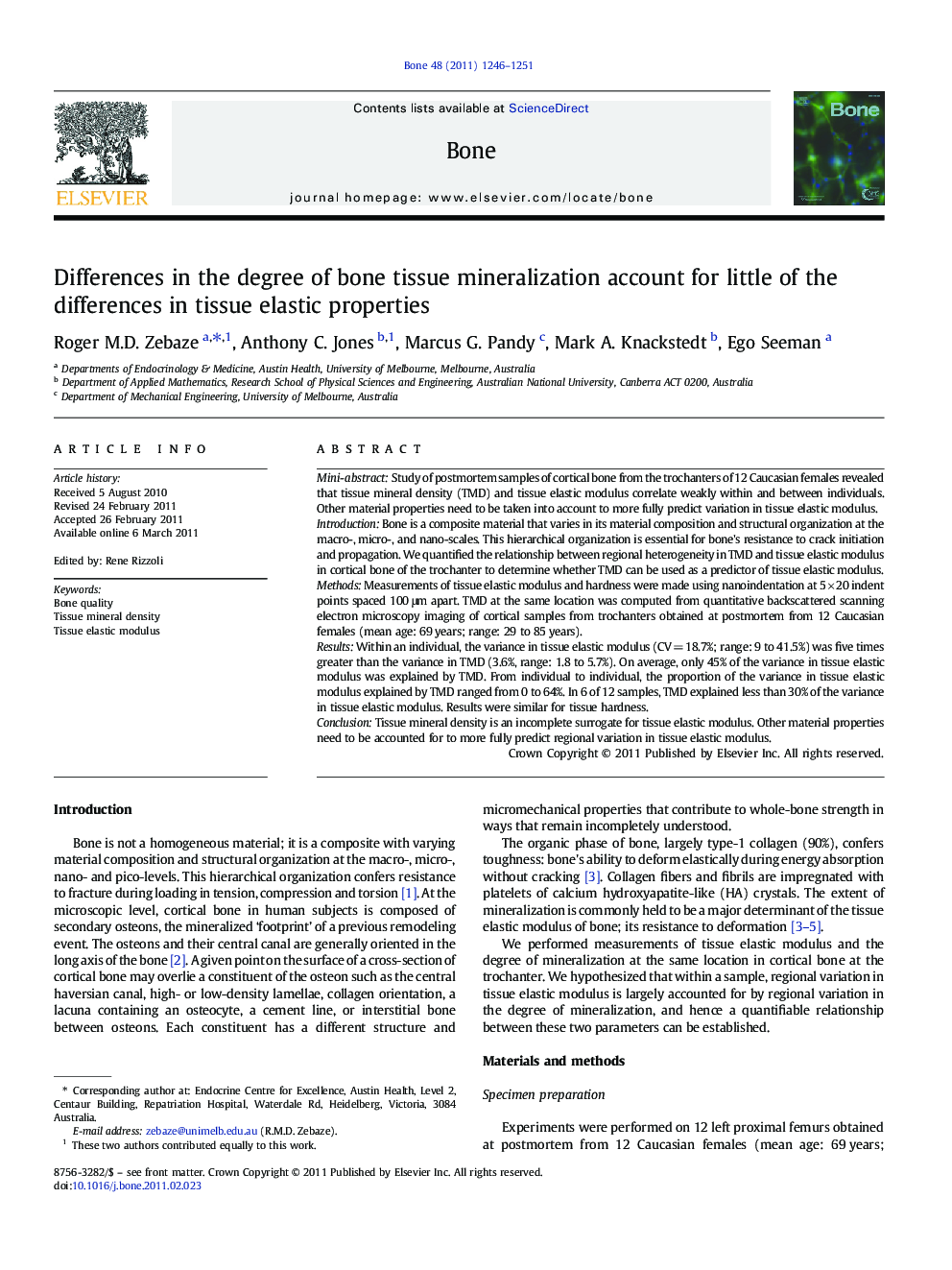| Article ID | Journal | Published Year | Pages | File Type |
|---|---|---|---|---|
| 2779971 | Bone | 2011 | 6 Pages |
Mini-abstractStudy of postmortem samples of cortical bone from the trochanters of 12 Caucasian females revealed that tissue mineral density (TMD) and tissue elastic modulus correlate weakly within and between individuals. Other material properties need to be taken into account to more fully predict variation in tissue elastic modulus.IntroductionBone is a composite material that varies in its material composition and structural organization at the macro-, micro-, and nano-scales. This hierarchical organization is essential for bone's resistance to crack initiation and propagation. We quantified the relationship between regional heterogeneity in TMD and tissue elastic modulus in cortical bone of the trochanter to determine whether TMD can be used as a predictor of tissue elastic modulus.MethodsMeasurements of tissue elastic modulus and hardness were made using nanoindentation at 5 × 20 indent points spaced 100 μm apart. TMD at the same location was computed from quantitative backscattered scanning electron microscopy imaging of cortical samples from trochanters obtained at postmortem from 12 Caucasian females (mean age: 69 years; range: 29 to 85 years).ResultsWithin an individual, the variance in tissue elastic modulus (CV = 18.7%; range: 9 to 41.5%) was five times greater than the variance in TMD (3.6%, range: 1.8 to 5.7%). On average, only 45% of the variance in tissue elastic modulus was explained by TMD. From individual to individual, the proportion of the variance in tissue elastic modulus explained by TMD ranged from 0 to 64%. In 6 of 12 samples, TMD explained less than 30% of the variance in tissue elastic modulus. Results were similar for tissue hardness.ConclusionTissue mineral density is an incomplete surrogate for tissue elastic modulus. Other material properties need to be accounted for to more fully predict regional variation in tissue elastic modulus.
Research highlights► The relationship between tissue mineral density and elastic modulus is unpredictable. ► Tissue mineral density is an incomplete surrogate for tissue elastic modulus. ► Factors other than mineralization explain regional variation in elastic modulus.
